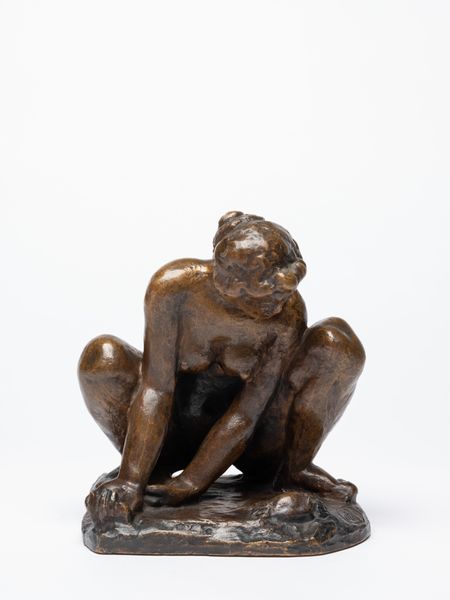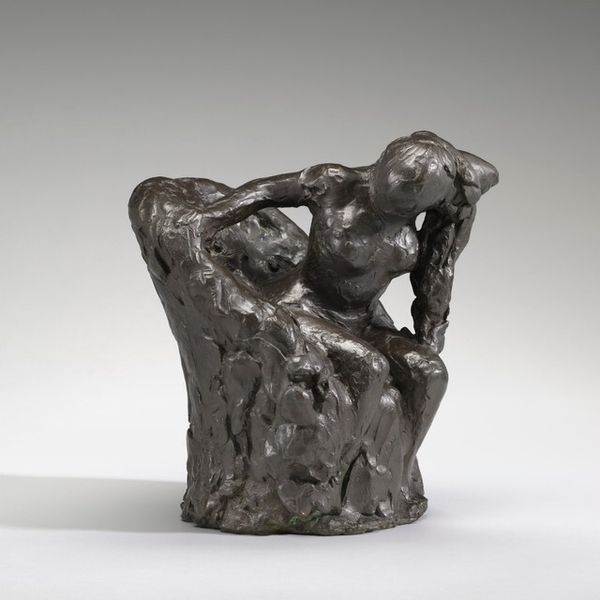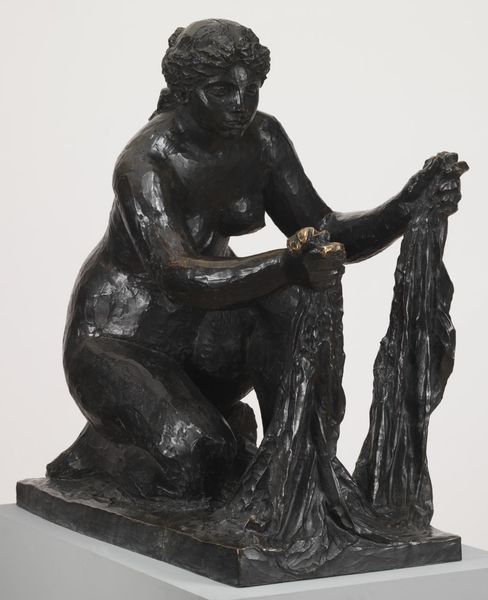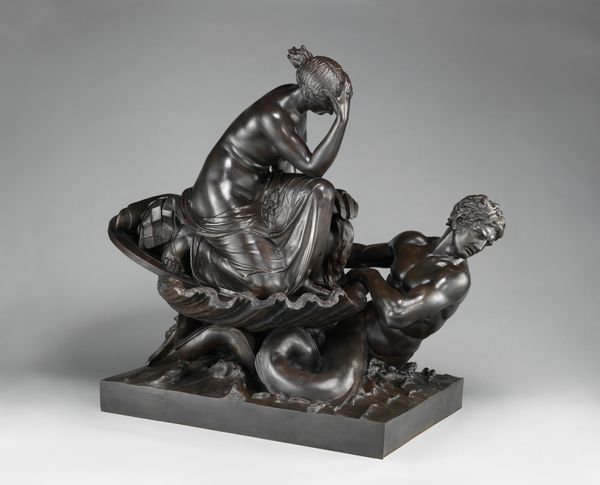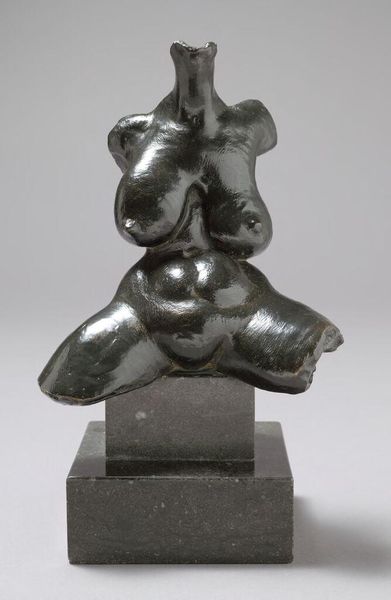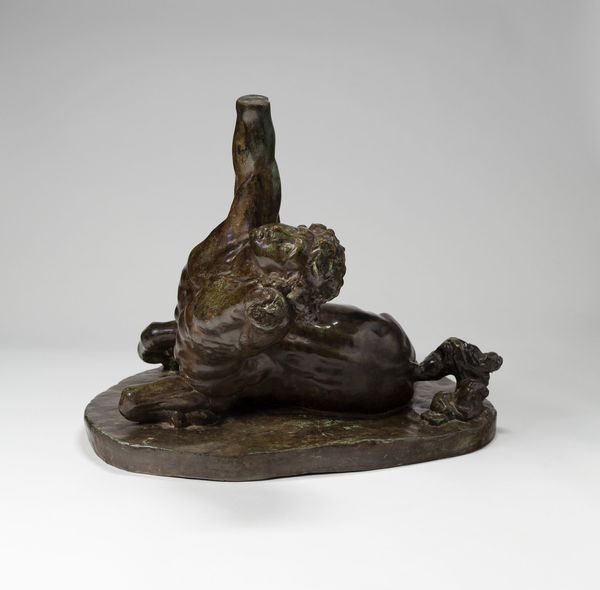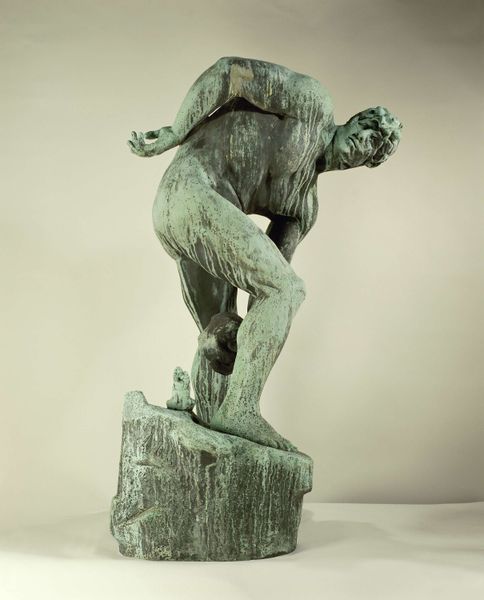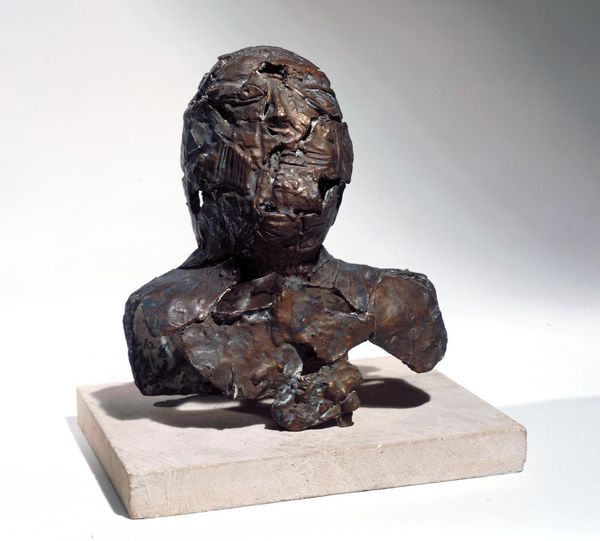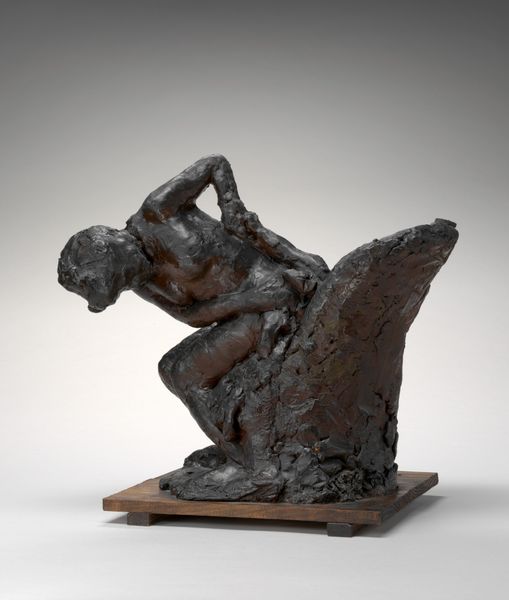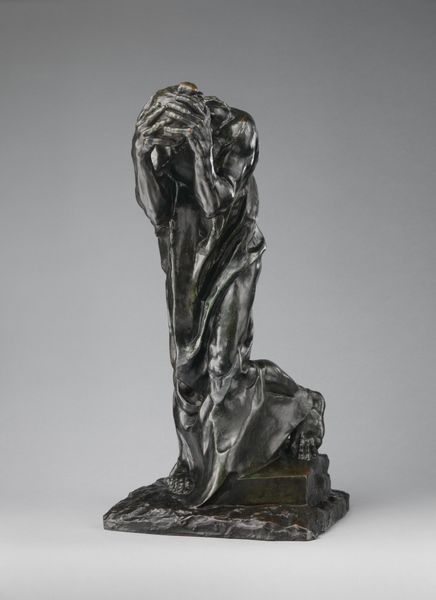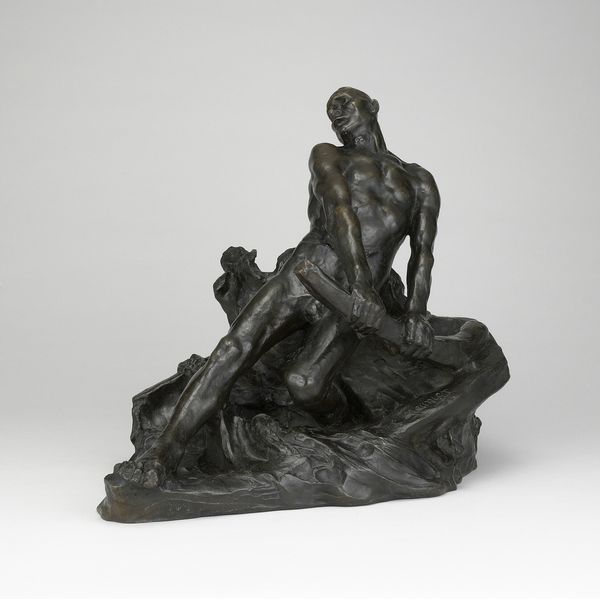
Dimensions: object: 321 x 368 x 381 mm, 15 kg
Copyright: CC-BY-NC-ND 4.0 DEED, Photo: Tate
Curator: Here we have Henri Gaudier-Brzeska's sculpture, "Fallen Workman," housed here at the Tate Britain. Editor: My first thought is of sheer exhaustion, a complete physical collapse. The slumped posture, the way the body seems to melt into the base... Curator: Exactly. There's such a sense of gravity here, a weightiness emphasized by the bronze and its dimensions of approximately 321 x 368 x 381 mm. It speaks to the artist's exploration of form and raw emotion. Editor: I see it more as the artist wrestling with the brutality of labor, that tension between the body's potential and its limits, wouldn't you agree? It is a study of angles and curves. Curator: Perhaps. Gaudier-Brzeska's life was tragically cut short in World War I, wasn't it? It's hard not to read that knowledge into the piece, this idea of potential unfulfilled. Editor: Indeed. The piece is potent, however you interpret it.
Comments
tatebritain 8 months ago
⋮
http://www.tate.org.uk/art/artworks/gaudier-brzeska-fallen-workman-t03727
Join the conversation
Join millions of artists and users on Artera today and experience the ultimate creative platform.
tatebritain 8 months ago
⋮
Gaudier-Brzeska based this work on an incident he had witnessed in Paris, when a workman fell from a scaffold. The original version had arms, portraying the injured figure raising himself off the ground. GaudierBrzeska first sculpted the figure in clay, which was later cast in plaster and then bronze. The fluid, vigorous modelling reflects his deep admiration for Auguste Rodin, whose sculpture of John the Baptist he praised in a letter to Sophie Brzeska: ‘he belongs to my own time, is in my epoch, he has a 20th-century workman’s body just as I see it and know it’. Gallery label, September 2024
